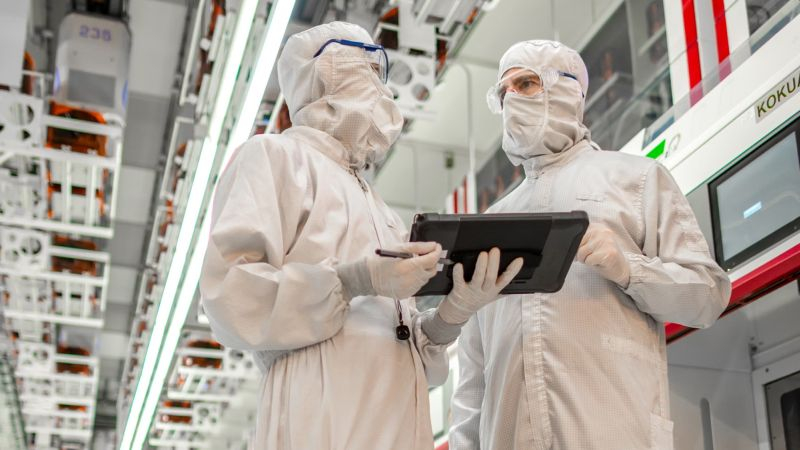The experience of the chip shortage caused by the pandemic shows that money alone is not enough to increase their production volumes. Modern production lines require a sufficient number of highly skilled personnel, and the current boom in artificial intelligence systems with its high demand for a number of components will only exacerbate this. At the same time, it is still difficult to replace the work of an engineer with artificial intelligence.

Image source: Micron Technology
Such disappointing conclusions are reached by the authors of the publication on the pages of the Financial Times website, who operate with McKinsey forecasts. Experts say the US semiconductor sector, supported by generous government subsidies, will need 160,000 new workers over the next five years, even without building construction workers. At the same time, the ranks of engineers at specialized enterprises in the United States are annually replenished with at most 1,500 employees.
The situation is even worse when it comes to semiconductor manufacturing technicians who do not require higher education or advanced degrees for qualifications. If the American industry’s need for this profile reaches 75,000 vacancies in five years, then annually the ranks of specialists in this area will be replenished with at most 1,000 applicants. In fact, the US semiconductor manufacturing workforce has declined 43% from its peak since 2000. If everything continues to develop at the current pace, then by 2029 the shortage of employees in the semiconductor industry in the United States will amount to 146,000 positions.
In South Korea, by 2031 the shortage of specialists will be measured in 56,000 positions. At the same time, up to 80% of the world’s contract production of chips is provided by Taiwan in combination with South Korea. Both states suffer from demographic problems in the form of an aging population. The same company, TSMC, had to send about 1,100 employees from Taiwan to the United States in order to speed up the construction of American enterprises, thereby further limiting the island’s internal talent pool.
The difference in corporate cultures between the United States and Taiwan also makes itself felt when it comes to the ability of American enterprises to ensure the country’s self-sufficiency in supplying the domestic market with electronic components. Investments in each new enterprise reach tens of billions of US dollars, and in order for them to justify themselves, chips must be produced almost non-stop. If in Taiwan an equipment malfunction at one in the morning is corrected by two in the morning of the same day, then in the United States in a similar situation one will have to wait for the start of the morning shift.
Artificial intelligence in this area is not yet as useful as in chip design, since it cannot yet optimize and replace the work of an engineer in production. It will be many years before the shortage of personnel in this area can be compensated with the help of automation tools.